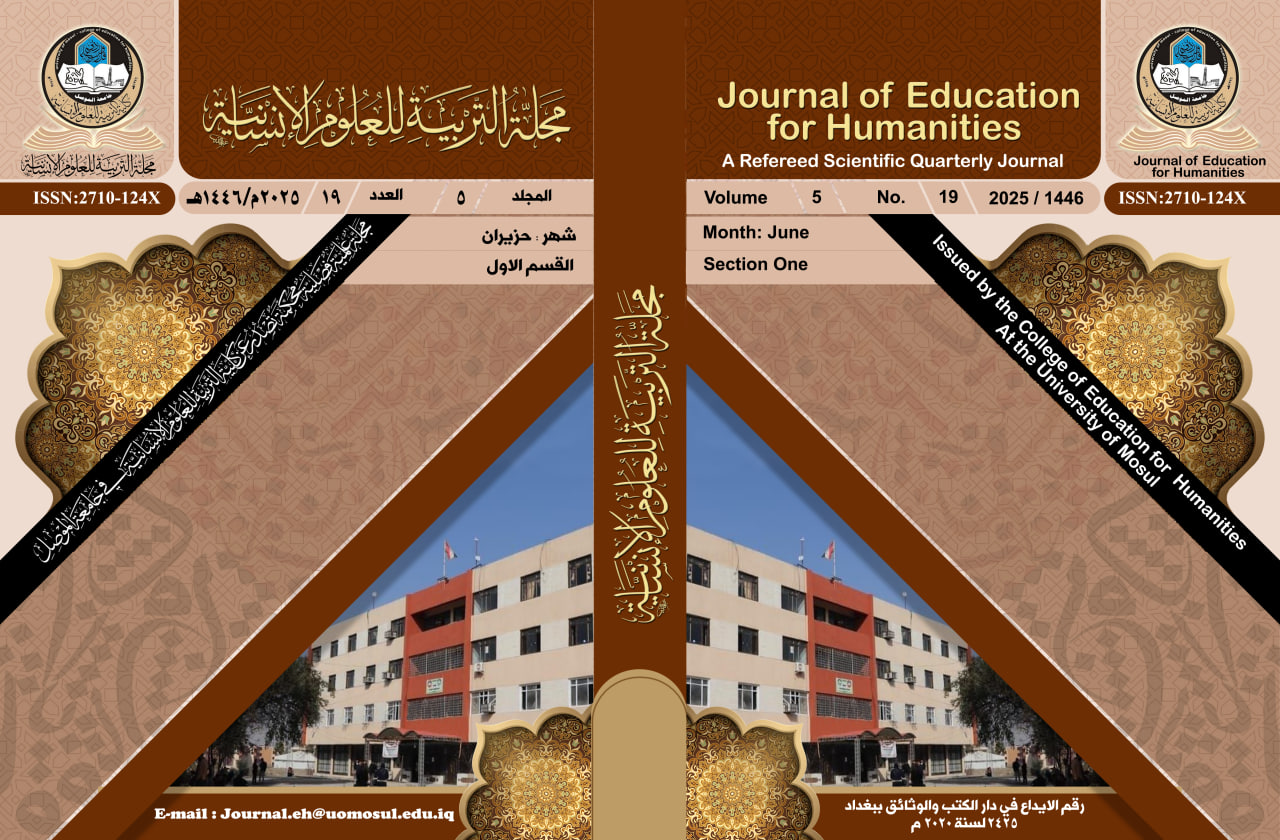Abstract
This research aims to study the challenging verses contained in the Holy Qur’an, from a rhetorical and semantic point of view, in order to highlight the arts, declarative methods, and pleasant meanings in them, and to show the aspects of difference or agreement in them that distinguish them from other verses.
The study consisted of two sections: The first was about the rhetorical and semantic secrets of the challenge verses, and the second was about the aspects of agreement and differences between those verses.
The researcher followed the descriptive and analytical approach to the text, to reach results, the most important of which are:
The strength of the connection between the challenging verses and the opening of the surahs contained in them. We find that three of them opened their surahs with disjointed letters indicating that the Qur’an is miraculous with its words, their arrangement, and their composition, even though they are composed of those letters known to the Arabs. The verse of the Night Journey was devoid of that oath, and for this reason it was designated with an oath at the beginning of the verse. As for the verse of Al-Tur, the surah opened with an oath with a book. God Almighty frankly, without exaggeration or innuendo.
Then the verses of challenge were distinguished and agreed upon in the selection of precise and precise words in all of them, which fulfilled their general purpose, which is the challenge and miracle of the Holy Qur’an, including: (So they came), which indicates the inability of the addressees to come up with something like the Holy Qur’an in wording, composition, and harmony, and the collective expression (Call upon). Evidence of the completeness of the challenge and its generalization to all creatures, whether humans or jinn, Arabs or non-Arabs, few or many.
The study consisted of two sections: The first was about the rhetorical and semantic secrets of the challenge verses, and the second was about the aspects of agreement and differences between those verses.
The researcher followed the descriptive and analytical approach to the text, to reach results, the most important of which are:
The strength of the connection between the challenging verses and the opening of the surahs contained in them. We find that three of them opened their surahs with disjointed letters indicating that the Qur’an is miraculous with its words, their arrangement, and their composition, even though they are composed of those letters known to the Arabs. The verse of the Night Journey was devoid of that oath, and for this reason it was designated with an oath at the beginning of the verse. As for the verse of Al-Tur, the surah opened with an oath with a book. God Almighty frankly, without exaggeration or innuendo.
Then the verses of challenge were distinguished and agreed upon in the selection of precise and precise words in all of them, which fulfilled their general purpose, which is the challenge and miracle of the Holy Qur’an, including: (So they came), which indicates the inability of the addressees to come up with something like the Holy Qur’an in wording, composition, and harmony, and the collective expression (Call upon). Evidence of the completeness of the challenge and its generalization to all creatures, whether humans or jinn, Arabs or non-Arabs, few or many.
Keywords
Challenging Verses
rhetorical
semantic
Abstract
يهدف هذا البحث إلى دراسة آيات التحدي الواردة في القرآن الكريم، من الوجهة البلاغية الدلالية، وذلك لإبراز ما فيها من فنون وأساليب بيانية، ومعانٍ لطيفة، وإظهار ما فيها من أوجه اختلاف أو اتّفاق تميّزت بها عن غيرها من الآيات.
وتكونت الدراسة من مبحثين؛ الأول منها كان عن الأسرار البلاغية الدلالية لآيات التحدي، والثاني عن أوجه الاتفاق وأوجه الاختلاف بين تلك الآيات.
وقد تبع الباحث المنهج الوصفي التحليلي للنص، للوصول إلى نتائج، من أهمها:
قوة الترابط بين آيات التحدي وبين افتتاح السور الواردة فيها؛ إذ نجد أن ثلاثاً منها افتتحت سورها بالحروف المقطعة الدالة على أن القرآن معجز بكلماته وترتيبها وتركيبها، مع أنها متكوّنة من تلك الحروف المعروفة عند العرب، وآية الإسراء خلتْ من ذلك القسم من أجل هذا اختُصت بالقسم في بداية الآية، وأما آية الطور فافتتحت السورة بالقسم بكتاب الله تعالى صراحة دون تعريض أو تلويح.
ثم إن آيات التحدي تميّزت وتوافقت على اختيار الألفاظ الدقيقة والمحكمة في جميعها، التي تحقق الغرض العام منها، وهو التحدي والإعجاز بالقرآن الكريم، منها: (فأتوا) الذي يدل على عجز المخاطبين عن الإتيان بمثل القرآن الكريم لفظاً وتركيباً وانسجاماً، واللفظ الجماعي (ادعوا) الدال على كمال التحدي وتعميمه لسائر المخلوقات إنساً أم جناً، عرباً أم عجماً، قليلين أم كثيرين.
وتكونت الدراسة من مبحثين؛ الأول منها كان عن الأسرار البلاغية الدلالية لآيات التحدي، والثاني عن أوجه الاتفاق وأوجه الاختلاف بين تلك الآيات.
وقد تبع الباحث المنهج الوصفي التحليلي للنص، للوصول إلى نتائج، من أهمها:
قوة الترابط بين آيات التحدي وبين افتتاح السور الواردة فيها؛ إذ نجد أن ثلاثاً منها افتتحت سورها بالحروف المقطعة الدالة على أن القرآن معجز بكلماته وترتيبها وتركيبها، مع أنها متكوّنة من تلك الحروف المعروفة عند العرب، وآية الإسراء خلتْ من ذلك القسم من أجل هذا اختُصت بالقسم في بداية الآية، وأما آية الطور فافتتحت السورة بالقسم بكتاب الله تعالى صراحة دون تعريض أو تلويح.
ثم إن آيات التحدي تميّزت وتوافقت على اختيار الألفاظ الدقيقة والمحكمة في جميعها، التي تحقق الغرض العام منها، وهو التحدي والإعجاز بالقرآن الكريم، منها: (فأتوا) الذي يدل على عجز المخاطبين عن الإتيان بمثل القرآن الكريم لفظاً وتركيباً وانسجاماً، واللفظ الجماعي (ادعوا) الدال على كمال التحدي وتعميمه لسائر المخلوقات إنساً أم جناً، عرباً أم عجماً، قليلين أم كثيرين.
Keywords
آيات التحدي، بلاغية، دلالية
